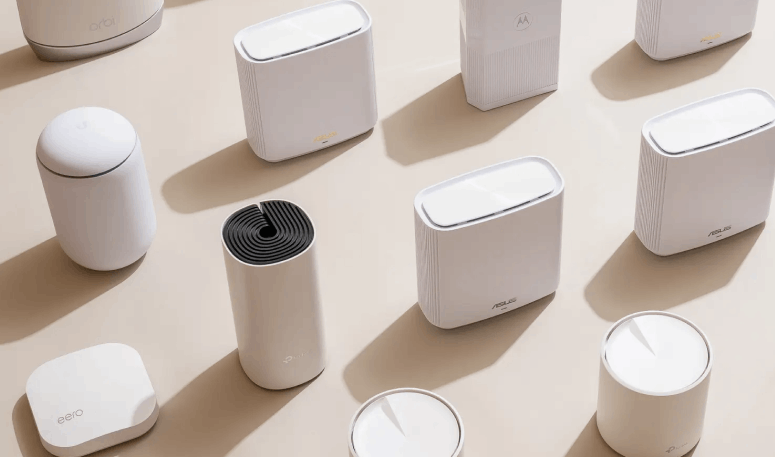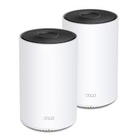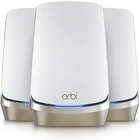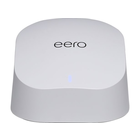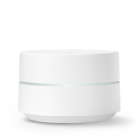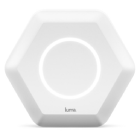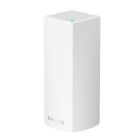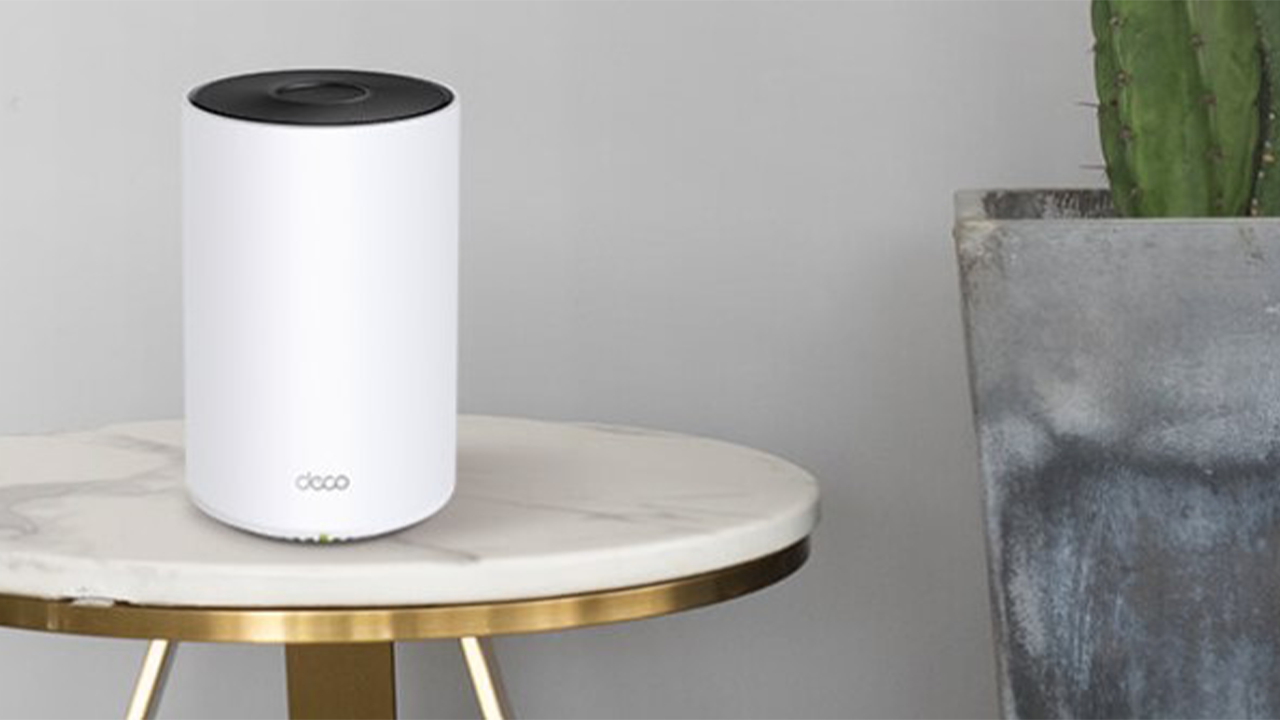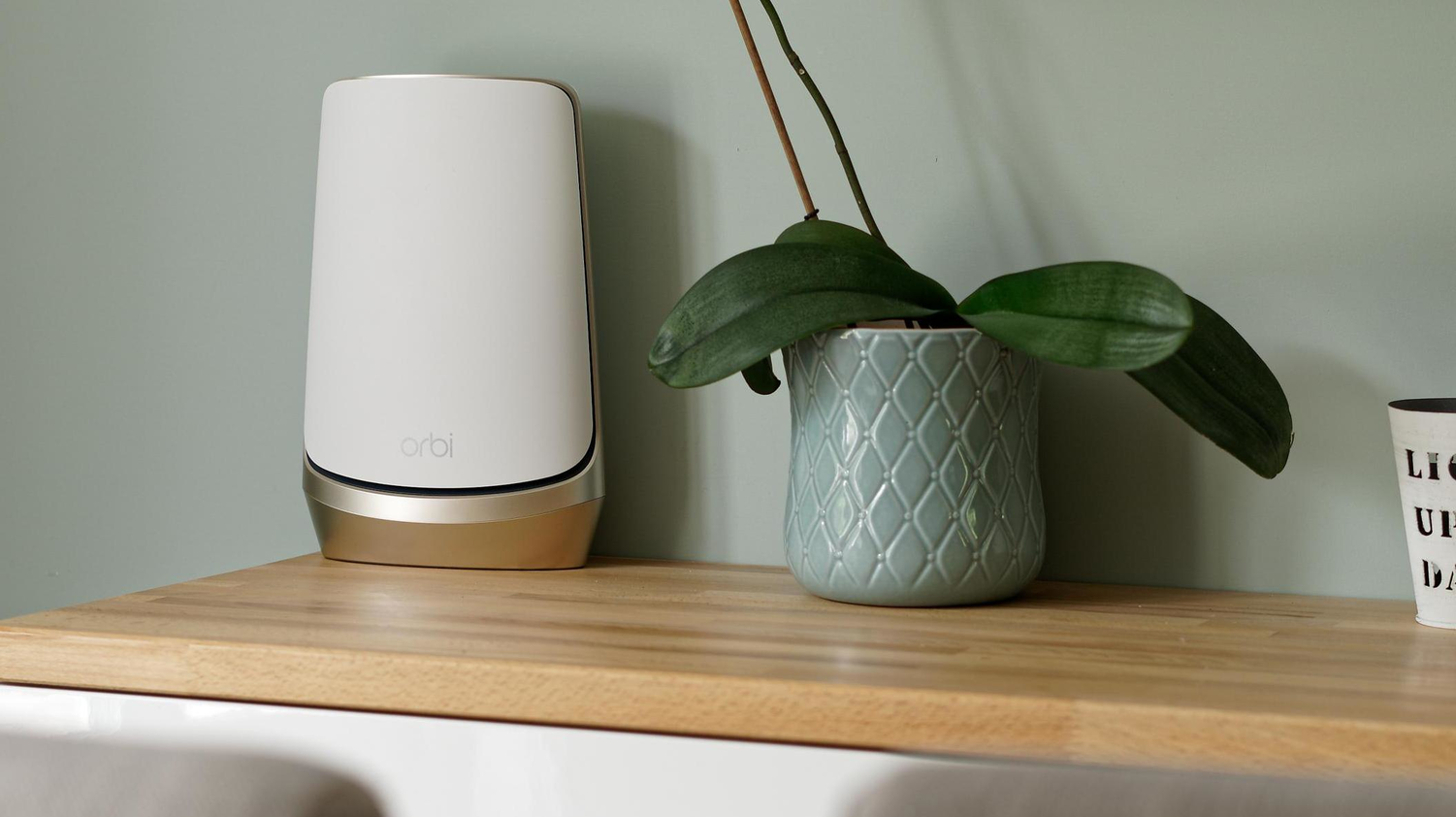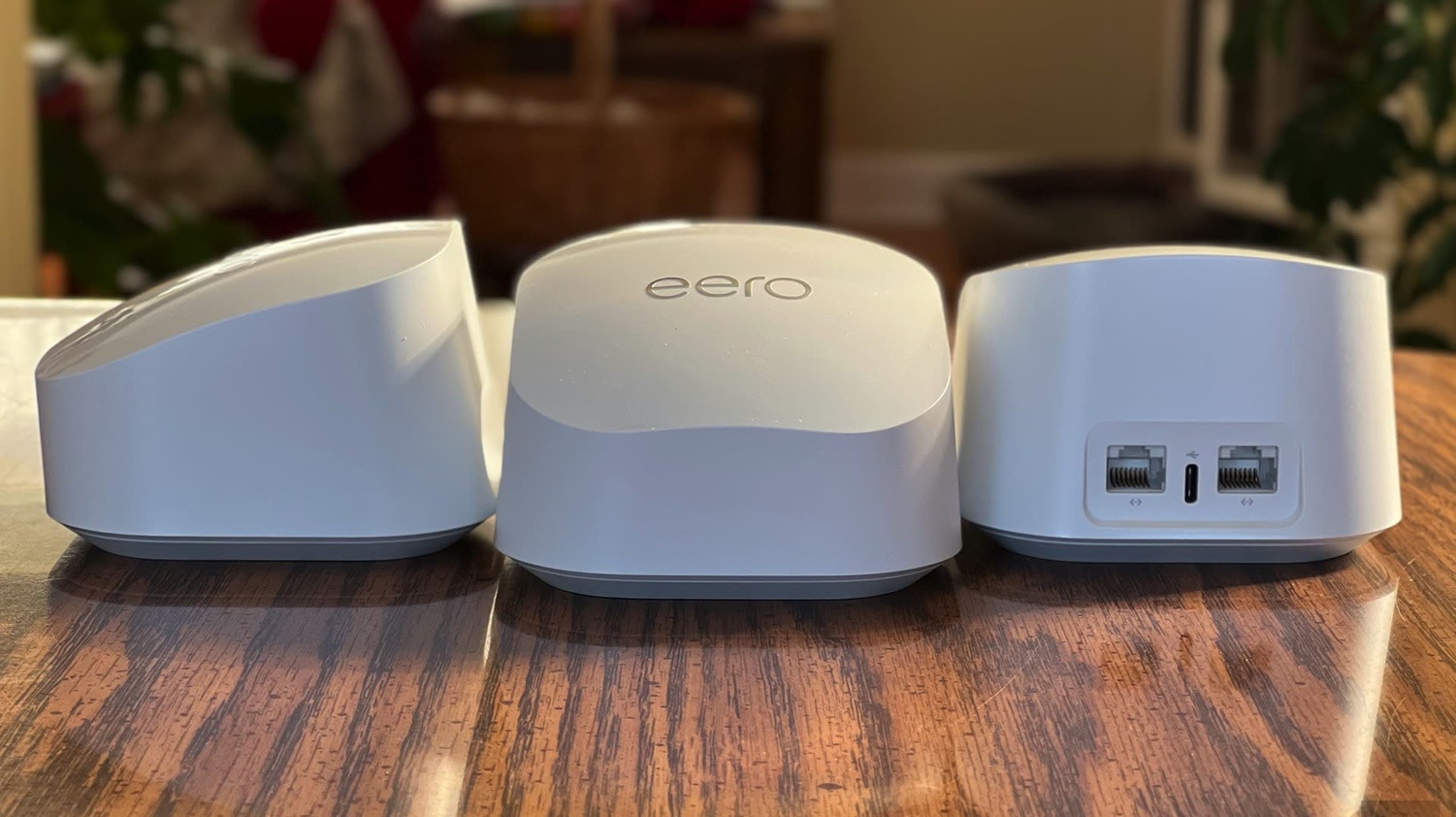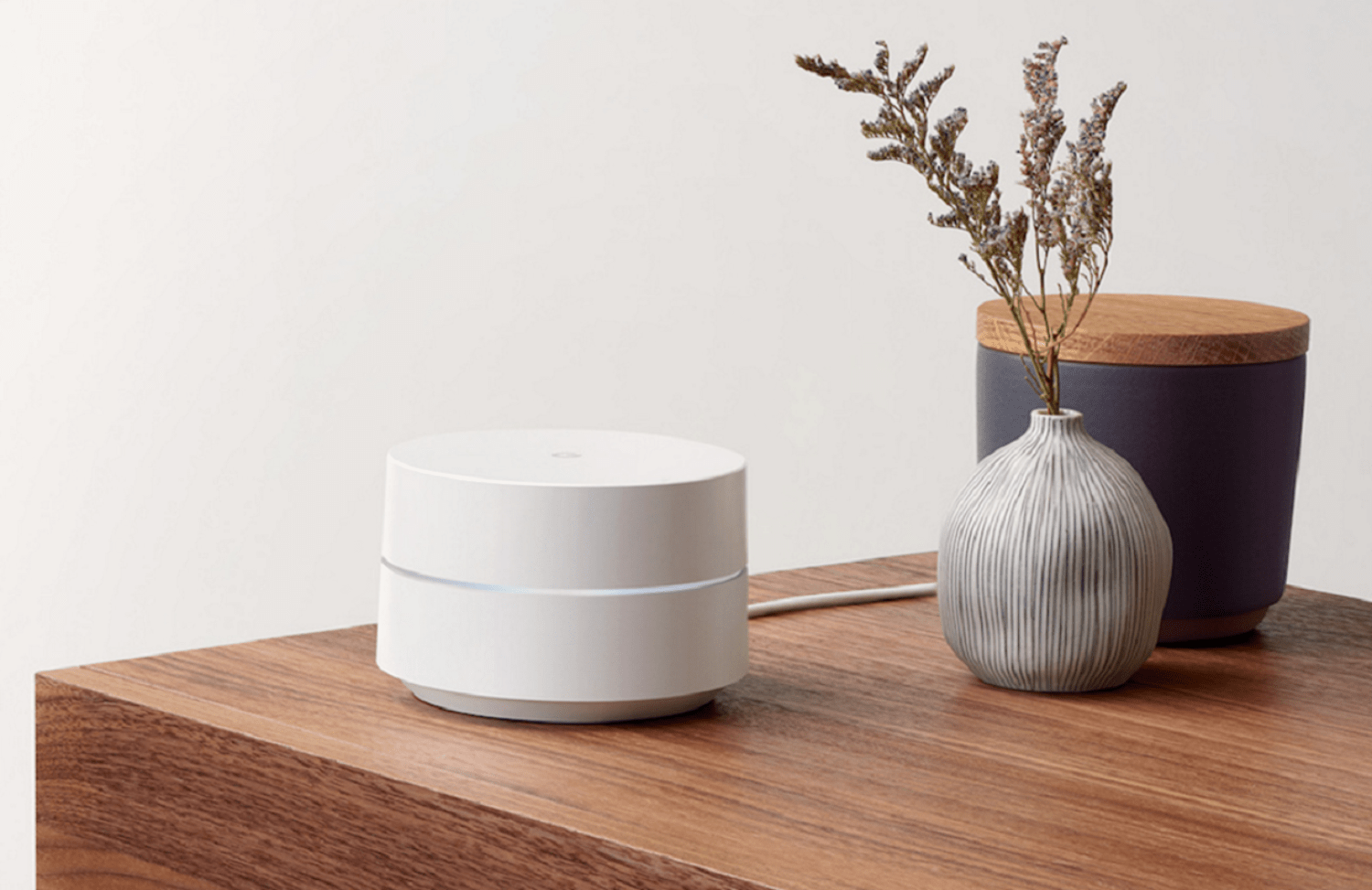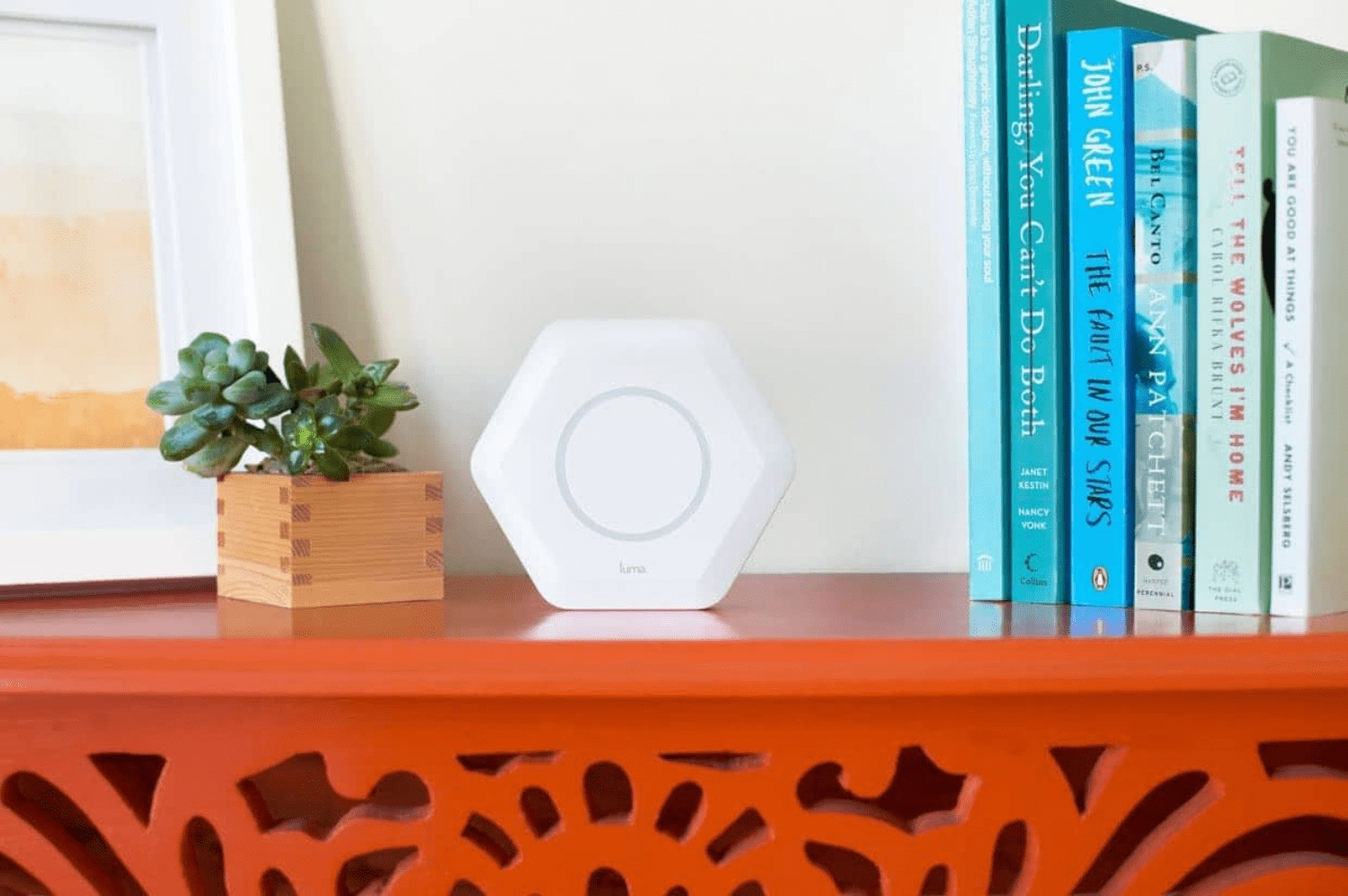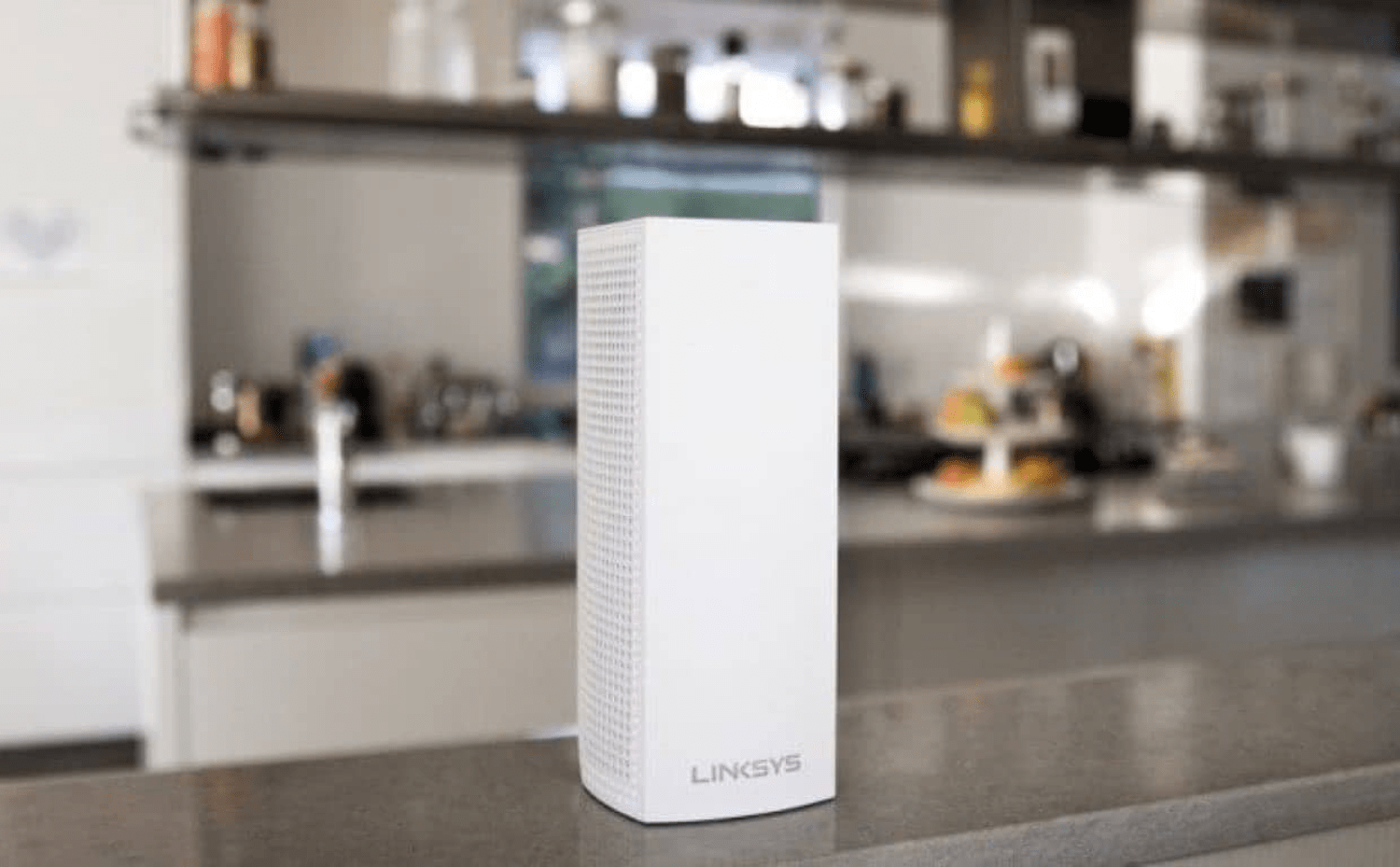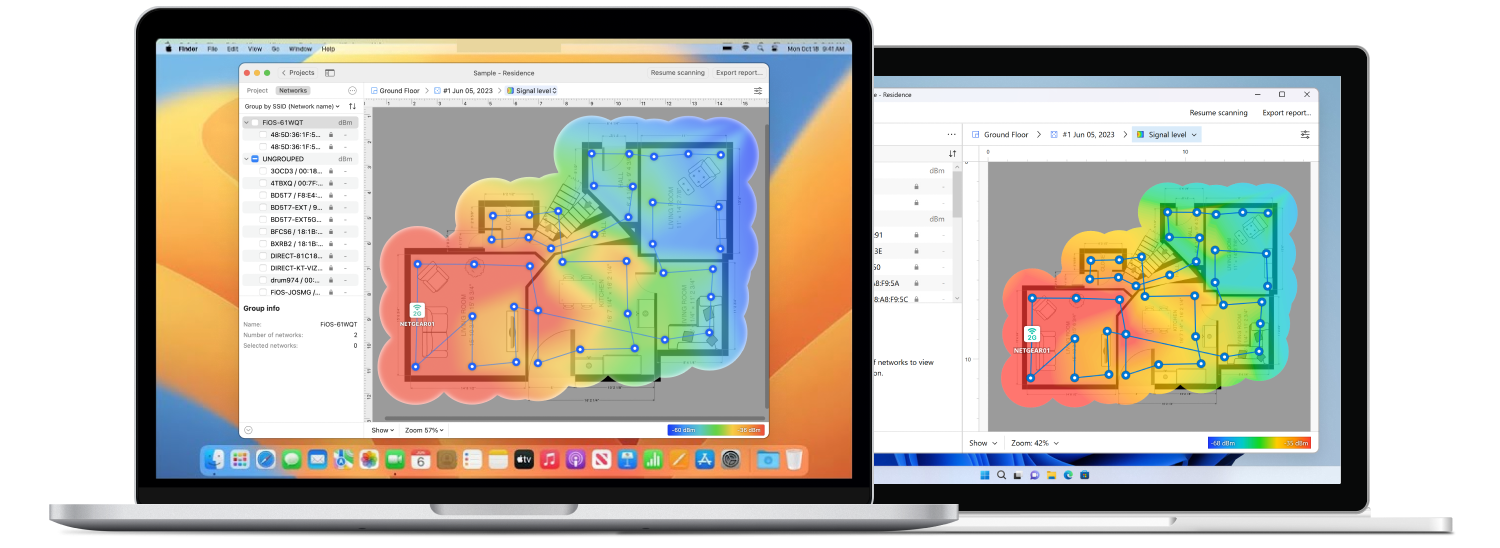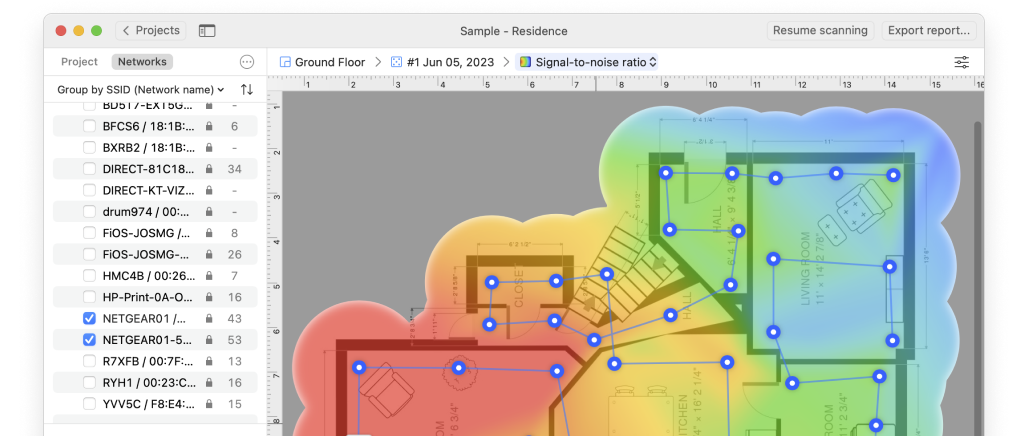Luma — $400.00 for a three-piece kit, works with Alexa, 5,000 sq. ft. max coverage area, 2 Ethernet ports per device by Luma
Luma is an evolving mesh network system that lets you say goodbye to Wi-Fi dead zones. It promises easy setup process, flexible features, and great performance. Each unit in Luma system is dual-band and dual-stream with two wired Gigabit Ethernet ports. The units are flat hexagons that can only be positioned vertically unlike Eero system.
The units in Luma home wifi system look identical (without a dedicated base or satellite), which is similar to Eero. It is reasonable to label your Luma units to be able to easily identify them in case you decide to move them around.
Luma offers an extensive set of features including parental controls, Internet pause, and what Luma refers to as “network security scanning”. The parental controls and the “network security scanning” are actually just DNS-based filters, which means that if an attack that doesn’t rely on DNS happens, it will easily go through.
| Admin interface: |
mobile app |
| Max coverage area, in theory: |
5,000 sq. ft. |
| Ethernet ports: |
two per node |
| USB ports: |
one per node |
| Smart Home integration: |
Alexa |
| Parental controls: |
Yes |
| Price: |
$400 for three,
$150 for one |
